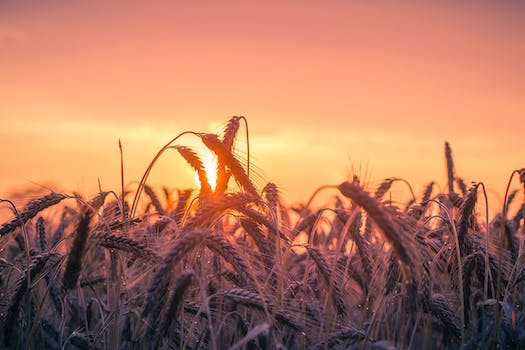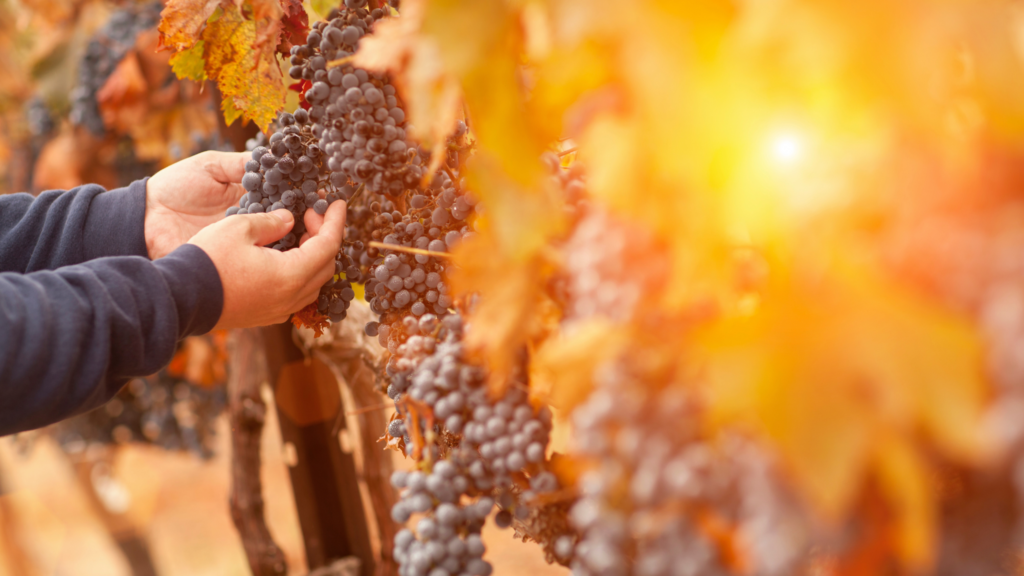Table of Contents
- How Winemakers are Adapting to Climate Change in the Pacific Northwest for the 2023 Harvest
- Exploring the Impact of New Technology on Winemaking in the Pacific Northwest for the 2023 Harvest
- Examining the Benefits of Sustainable Winemaking Practices in the Pacific Northwest for the 2023 Harvest
- Analyzing the Impact of Local Terroir on the 2023 Harvest in the Pacific Northwest
- Q&A
“Uncork the Future: Get Insights from Winemakers on the 2023 Harvest in the Pacific Northwest!”
The Pacific Northwest is home to some of the world’s most renowned winemakers, and the 2023 harvest is sure to be no exception. As the region’s winemakers prepare for the upcoming harvest, they are sharing their insights on what to expect in the coming months. From the impact of climate change to the potential for new varietals, winemakers in the Pacific Northwest are offering a unique perspective on the 2023 harvest. In this article, we will explore the insights of these winemakers and discuss the potential implications for the region’s wine industry.
How Winemakers are Adapting to Climate Change in the Pacific Northwest for the 2023 Harvest

The Pacific Northwest is home to some of the world’s most renowned wineries, and the 2023 harvest is sure to be no exception. But with climate change bringing hotter temperatures and more extreme weather, winemakers in the region are having to adapt their practices to ensure the quality of their wines.
One of the biggest changes winemakers are making is shifting their harvest dates earlier. Warmer temperatures mean grapes ripen faster, so winemakers are harvesting earlier to ensure the grapes don’t become overripe. This also helps to preserve the acidity of the grapes, which is essential for producing high-quality wines.
Winemakers are also experimenting with different grape varieties. As temperatures rise, some of the traditional varieties may no longer be suitable for the region. Winemakers are looking to varieties that are better suited to warmer climates, such as Grenache and Mourvedre.
Another adaptation winemakers are making is using more sustainable practices. This includes reducing water usage, using cover crops to reduce erosion, and using natural pest control methods. These practices help to reduce the impact of climate change on the environment, while also ensuring the quality of the wines.
Finally, winemakers are investing in new technology to help them monitor and manage their vineyards. This includes sensors that measure soil moisture, temperature, and other environmental factors. This helps winemakers to better understand their vineyards and make informed decisions about when to harvest and how to manage their vineyards.
The 2023 harvest is sure to be an exciting one for winemakers in the Pacific Northwest. With climate change bringing new challenges, winemakers are having to adapt their practices to ensure the quality of their wines. By investing in new technology, experimenting with different grape varieties, and using more sustainable practices, winemakers are ensuring that the 2023 harvest will be a success.
Exploring the Impact of New Technology on Winemaking in the Pacific Northwest for the 2023 Harvest
The Pacific Northwest is home to some of the world’s most renowned winemaking regions, and the 2023 harvest is sure to be no exception. As technology continues to evolve, winemakers in the region are beginning to explore how new technology can be used to improve the quality of their wines. From automated harvesting and sorting to advanced analytics and data-driven decision-making, the possibilities are endless.
One of the most exciting new technologies being explored is the use of drones for vineyard management. Drones can be used to monitor vine health, detect pests and diseases, and even apply targeted treatments. This can help winemakers reduce their reliance on chemical treatments and improve the sustainability of their operations.
Another area of innovation is the use of artificial intelligence (AI) to analyze data from vineyards and wineries. AI can be used to identify patterns in data that can help winemakers make better decisions about when to harvest, how to blend, and how to age their wines. This can help winemakers produce higher quality wines with greater consistency.
Finally, the use of blockchain technology is beginning to be explored in the wine industry. Blockchain can be used to track the origin of grapes, verify the authenticity of wines, and even facilitate direct-to-consumer sales. This could revolutionize the way winemakers interact with their customers and open up new opportunities for marketing and sales.
As technology continues to evolve, winemakers in the Pacific Northwest are sure to benefit from the new possibilities it brings. From drones and AI to blockchain, the 2023 harvest is sure to be an exciting time for winemakers in the region. With the right technology, winemakers can produce higher quality wines with greater efficiency and sustainability.
Examining the Benefits of Sustainable Winemaking Practices in the Pacific Northwest for the 2023 Harvest
As the 2023 harvest approaches, winemakers in the Pacific Northwest are looking for ways to make their operations more sustainable. Sustainable winemaking practices can have a positive impact on the environment, the economy, and the quality of the wine produced. Here are some of the benefits of sustainable winemaking in the Pacific Northwest.
First, sustainable winemaking practices can help reduce the environmental impact of winemaking. Sustainable practices such as using organic fertilizers, reducing water usage, and using renewable energy sources can help reduce the amount of pollutants released into the environment. This can help protect the local ecosystems and wildlife, as well as reduce the carbon footprint of the winery.
Second, sustainable winemaking practices can help boost the local economy. Sustainable wineries often use local ingredients and labor, which helps to support the local economy. Additionally, sustainable wineries often attract more visitors, which can help to increase tourism and generate more revenue for the local economy.
Finally, sustainable winemaking practices can help to improve the quality of the wine produced. Sustainable practices such as using organic fertilizers and reducing water usage can help to improve the flavor and quality of the wine. Additionally, sustainable practices can help to reduce the amount of chemicals used in the winemaking process, which can help to improve the health benefits of the wine.
Overall, sustainable winemaking practices can have a positive impact on the environment, the economy, and the quality of the wine produced. As the 2023 harvest approaches, winemakers in the Pacific Northwest should consider implementing sustainable practices to reap the benefits.
Analyzing the Impact of Local Terroir on the 2023 Harvest in the Pacific Northwest
The Pacific Northwest is known for its lush, green landscapes and its abundance of fresh, delicious produce. But what many don’t know is that the terroir of the region has a huge impact on the quality of the harvest each year. As we look ahead to the 2023 harvest, it’s important to understand how local terroir can affect the outcome.
So, what is terroir? In short, it’s the combination of climate, soil, and other environmental factors that influence the flavor and quality of a crop. In the Pacific Northwest, the terroir is characterized by mild temperatures, abundant rainfall, and nutrient-rich soil. This combination creates an ideal environment for growing a variety of fruits, vegetables, and grains.
The terroir of the Pacific Northwest can have a significant impact on the 2023 harvest. For example, if the region experiences a particularly wet spring, the soil may become waterlogged, leading to poor drainage and stunted growth. On the other hand, if the region experiences a dry spring, the soil may become too dry, leading to poor yields.
In addition to climate, soil type can also have an impact on the 2023 harvest. Soils that are high in organic matter tend to be more fertile and better able to retain moisture, leading to higher yields. On the other hand, soils that are low in organic matter tend to be less fertile and more prone to drought, leading to lower yields.
Finally, the presence of pests and diseases can also have an impact on the 2023 harvest. If the region experiences an outbreak of a particular pest or disease, it can lead to significant crop losses.
As you can see, the terroir of the Pacific Northwest can have a major impact on the 2023 harvest. By understanding the local terroir and taking steps to mitigate any potential risks, farmers can ensure that their crops are of the highest quality and yield the best results.
Q&A
Q1: What are some of the challenges that winemakers in the Pacific Northwest are facing with the 2023 harvest?
A1: Winemakers in the Pacific Northwest are facing a number of challenges with the 2023 harvest, including the potential for an early start to the season due to warmer temperatures, the risk of smoke taint from wildfires, and the need to manage disease pressure from mildew and other pests. Additionally, winemakers must also consider the impact of climate change on the quality and quantity of grapes available for harvest.
Q2: What strategies are winemakers using to mitigate the risks associated with the 2023 harvest?
A2: Winemakers in the Pacific Northwest are taking a variety of strategies to mitigate the risks associated with the 2023 harvest. These include implementing early season canopy management practices to reduce disease pressure, using cover crops to reduce soil erosion, and monitoring vineyard blocks for smoke taint. Additionally, winemakers are also investing in new technologies to help them better manage their vineyards and monitor the quality of their grapes.
Q3: What advice do winemakers have for grape growers in the Pacific Northwest for the 2023 harvest?
A3: Winemakers in the Pacific Northwest have a number of pieces of advice for grape growers in the region for the 2023 harvest. These include investing in early season canopy management practices, using cover crops to reduce soil erosion, and monitoring vineyard blocks for smoke taint. Additionally, winemakers advise grape growers to pay close attention to the weather and be prepared to adjust their harvest dates accordingly.
Q4: What impact do you think the 2023 harvest will have on the wine industry in the Pacific Northwest?
A4: The 2023 harvest is likely to have a significant impact on the wine industry in the Pacific Northwest. Winemakers are expecting an early start to the season due to warmer temperatures, and the risk of smoke taint from wildfires is a major concern. Additionally, winemakers must also consider the impact of climate change on the quality and quantity of grapes available for harvest. As a result, winemakers are taking a variety of strategies to mitigate the risks associated with the 2023 harvest, and the success of these strategies will have a major impact on the wine industry in the region.The 2023 harvest in the Pacific Northwest is sure to be an exciting one for winemakers. With the region’s unique climate and soil conditions, winemakers can expect to produce high-quality wines with unique flavor profiles. Winemakers should be prepared to adjust their practices to accommodate the changing climate and take advantage of the region’s unique terroir. With careful planning and preparation, winemakers can look forward to a successful harvest in 2023.
![]()










